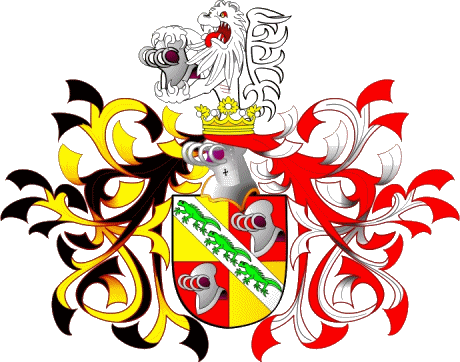

Hermann von Helmholtz (1821-1894)
[
The above copyrighted picture is reproduced
here by permission: © 2007
Jochen Wilke. ]
German blazon courtesy of Bernhard Peter.
Quarterly. [1 & 4] Or. [2 & 3] Gules, an iron helm Proper.
On a bend Argent overall, three salamanders Vert.
Crest: Out of a coronet [Or] a lion Argent holding the helm of the arms.
Dexter mantling Sable and Or. Sinister mantling Gules and Argent,
Von G. und R. quadriert mit w. mit 3 gr. Molchen belegten Schrägrechtsbalken,
beseitet in den r. Feldern von einem eisernen Turnierhelm.
HZ wachsender w. Löwe, einen der Helme in den Vorderpranken haltend.
HD schwarz-gold / rot-silbern
Hermann
Ludwig Ferdinand von Helmholtz was a major figure of 19th-century science.
One of his most fundamental contributions was to clarify the first principle of
thermodynamics (conservation of energy).
He is also credited with the idea (1854) that noncreasing entropy would ultimately
bring about the heat death of the Universe.

Before the discovery of radioactivity and the advent of
nuclear physics,
Helmholtz and Kelvin (1824-1907) suggested that the source of
the heat generated by the Sun might be due to a slow gravitational contraction in a
classical process now known as
Kelvin-Helmholtz
contraction.
This was advocated in a famous article published in 1862 by Sir William Thomson
(Lord Kelvin) entitled
The
Age of the Sun's Heat (doc,
pdf).
B&W arms



